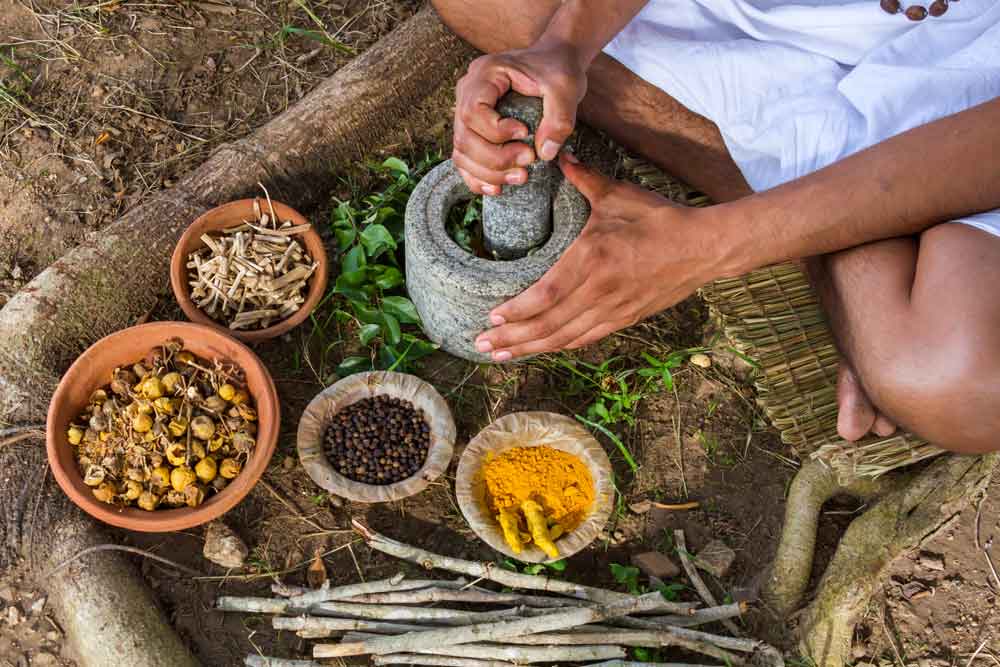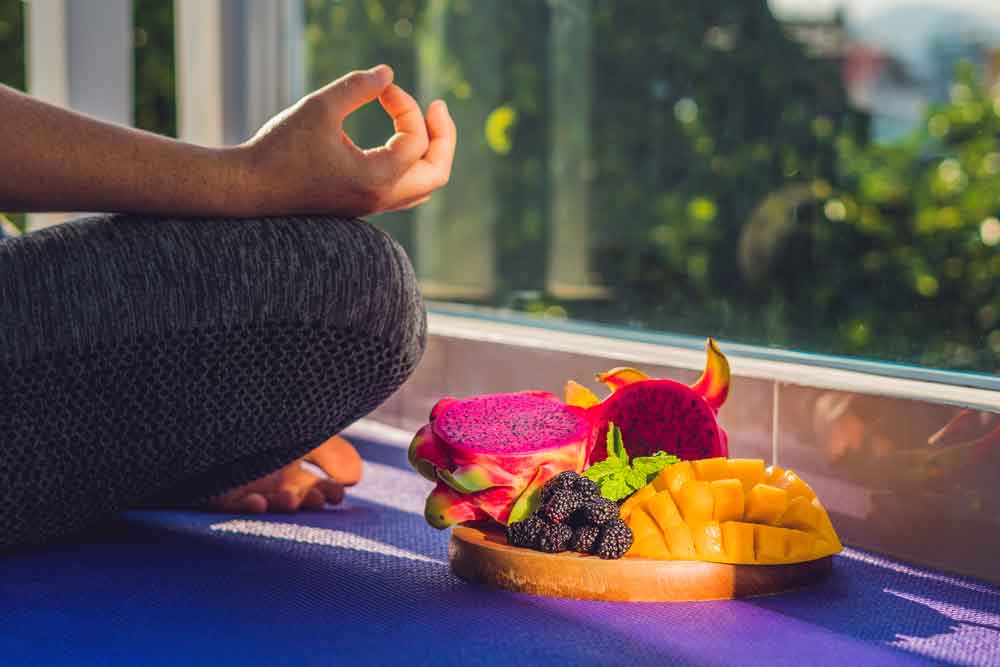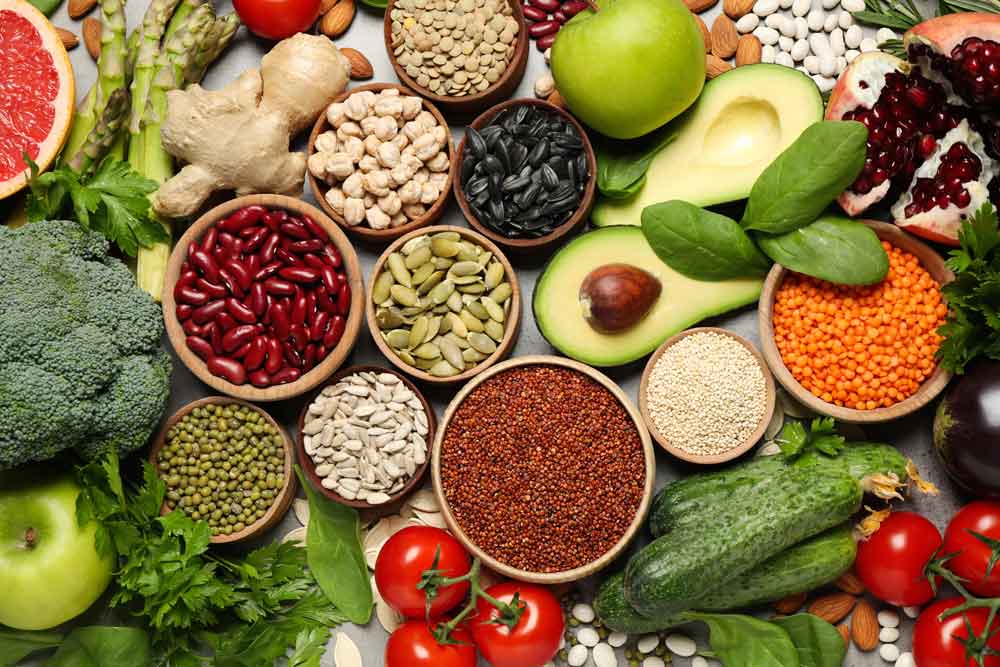Ayurveda is perceived as one of the most ancient and well-documented systems of medicine and a way of life that is equally relevant in modern times. In Ayurveda, balance is fundamental, it is something that you seek in every part of your life to enhance your overall quality of life. One's dietary habits is an integral part of this because it contributes to both mental and physical health.

“When diet is wrong, medicine is of no use; When diet is correct, medicine is of no need.” – An Ayurveda proverb.
It is said that if the Four Pillars of Ayurveda are attended to and balanced, it would be difficult for illness or disease to arise. Each of the Four Pillars plays a different, but an interconnected role in well-being – Food, Sleep, Exercise and Emotional wellness. This guide aims to provide information on Ahar (Food).
Covid-19 has pushed people towards immunity-boosting diets and vegetarianism. With the current generations moving towards more health consciousness and leaning towards Ayurvedic practices, many have adopted the sattvic way of eating.
Diet And Gunas

Gunas in Ayurveda are groupings of different qualities of energy in prakriti (physical matter) that define and reflect our health, behaviour, thinking and diet. The Three Gunas are: Sattva, Rajas and Tamas. Food and your dietary habits are known to influence your way of life and state of mind.
1. Sattvic means purity, health, harmony and well-being.
2. Rajasic means stress, anger, activity and restlessness.
3. Tamasic means dullness, laziness and lethargy.
Every one of us has all these three gunas, but their proportion varies. For example, Tamas guna is required for adequate rest and sleep, Rajas guna is necessary for work and Sattva for fulfilling aspirations in life. Ayurveda aims to increase the Sattva guna to nurture consciousness via a healthy body and mind. The preparation of food plays a vital part in determining which Guna it promotes. Fresh vegetarian food is usually Sattvic and becomes Rajasic by adding chillies, frying or over-cooking and Tamasic by cooking in advance and keeping it for too long.
Sattvic food: Explained

The Sattvic diet is a vegetarian diet that's based on Ayurvedic principles and is popular among yoga enthusiasts. The diet focuses on seasonal foods, fruits, nuts, ripe vegetables, oils, seeds, whole grains, legumes, and non-meat-based proteins. Sattvic means pure essence, and it is considered to be the purest diet for anyone who is spiritually and health-conscious. How they are eaten makes a difference in whether they add sattva or rajas to the mind and body. For instance, a vegetable is a perfectly fine Sattvic food when baked or cooked freshly with relatively low heat. But when deep-fried or made as a salad with heat-inducing spices like chilli, pepper and mustard it becomes Rajasic. However, frozen vegetables or day-old bhaji are Tamasic.
• A sattvic diet should be free from stimulants and chemicals.
• Avoid microwaved, genetically-modified, canned or processed foods.
• Fasting once or twice a month for detox is part of the diet—given that you’re in a medically fit position to do so.
• Sattvic food needs to be chewed properly and eaten in small servings.
• Overindulging in sattvic foods turn them tamasic and lead to diseases in the body.
Sattvic Diet Includes:

Food that is high in nutrient-rich plant foods and low in processed and fried foods
• All vegetables like spinach, potatoes, peas, cauliflower, carrots, etc
• All fruits like mangoes, bananas, papayas, melons, berries, etc
• Grains like barley, amaranth, millets, quinoa, wild rice, etc
• All types of nuts and seeds, including coconut products
• Healthy oils like ghee, flaxseed oil, sesame oil, olive oil, etc
• High-quality dairy products like milk, yoghurt, paneer, etc
• Legumes and beans like soy, chickpeas, lentils, etc
• Sattvic spices and herbs like ginger, turmeric, coriander leaves, cumin, basil, fenugreek, etc
• Sweeteners like honey and jaggery
• Beverages like water, herbal teas and other drinks that detoxify the body
The diet excludes all rajasic foods like spices, onions, garlic, chocolate, coffee, tea and deep-fried foods and tamasic foods like eggs, meat, fish, poultry and alcohol.
Benefits Of Adopting A Sattvic Diet

As per Ayurveda, a sattvic diet promoted strength, a calm mind, perfect health and longevity. It is easily digested and can strengthen the stomach, intestine, liver and pancreas. If you are prone to diseases such as diabetes, hypertension, high cholesterol and heart disease then adopting this high-fibre, a low-fat and vegetarian diet is likely to reduce the risks and keep the symptoms at bay.
All sattvic foods are also low in calories, and calorie-restrictive diets are well-known to aid healthy weight loss. Besides, sattvic food is also known to improve the health of your skin and the quality of your hair.